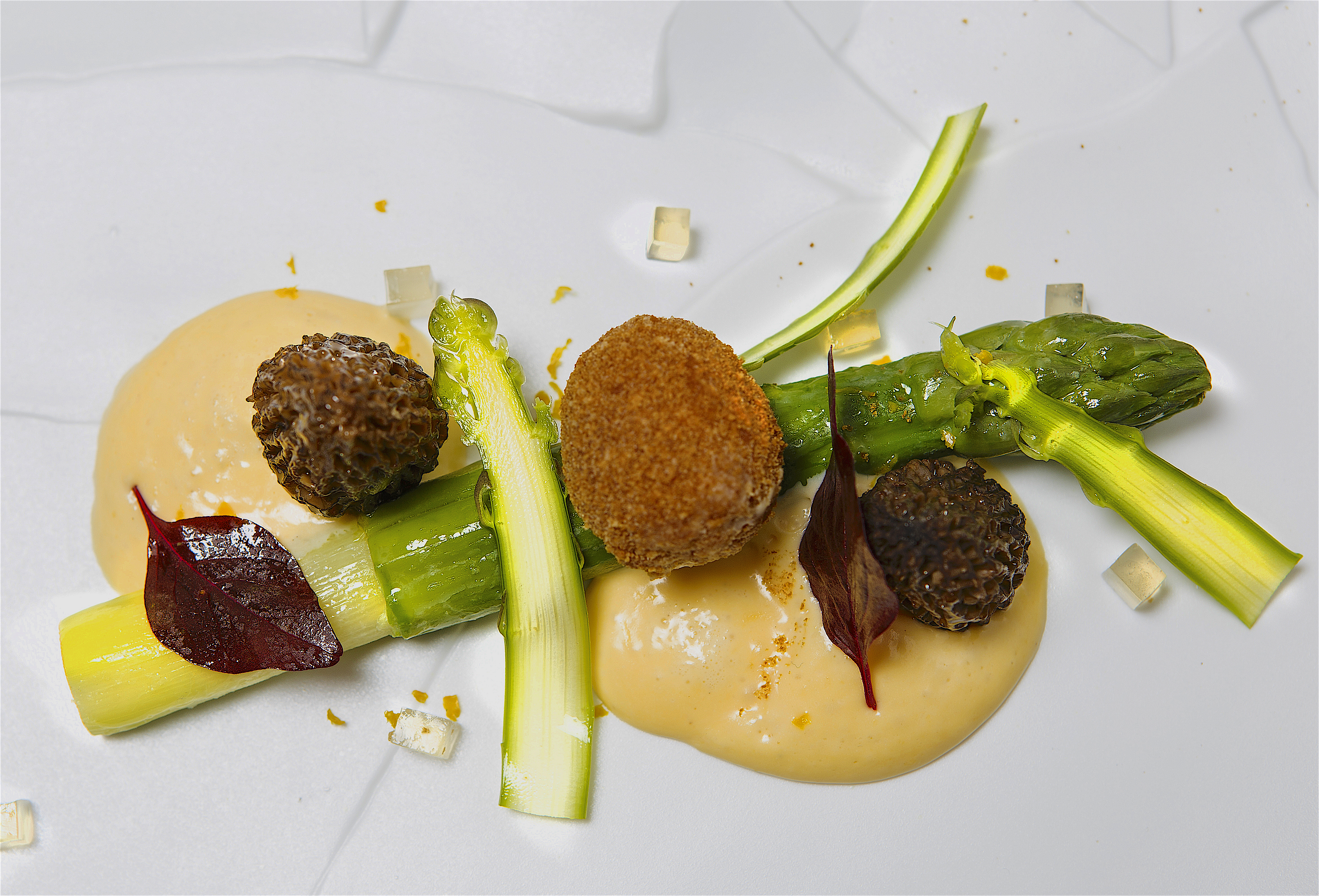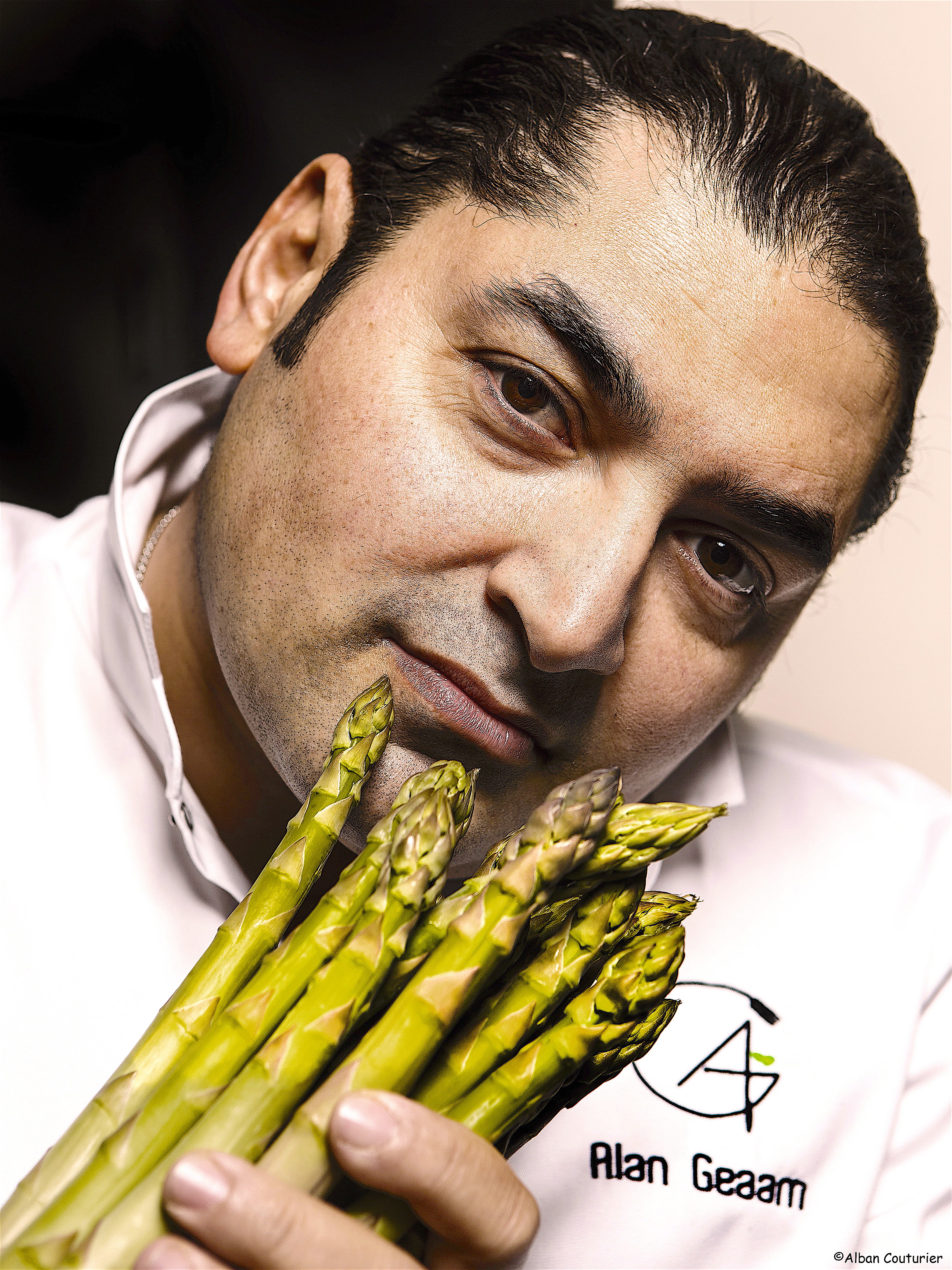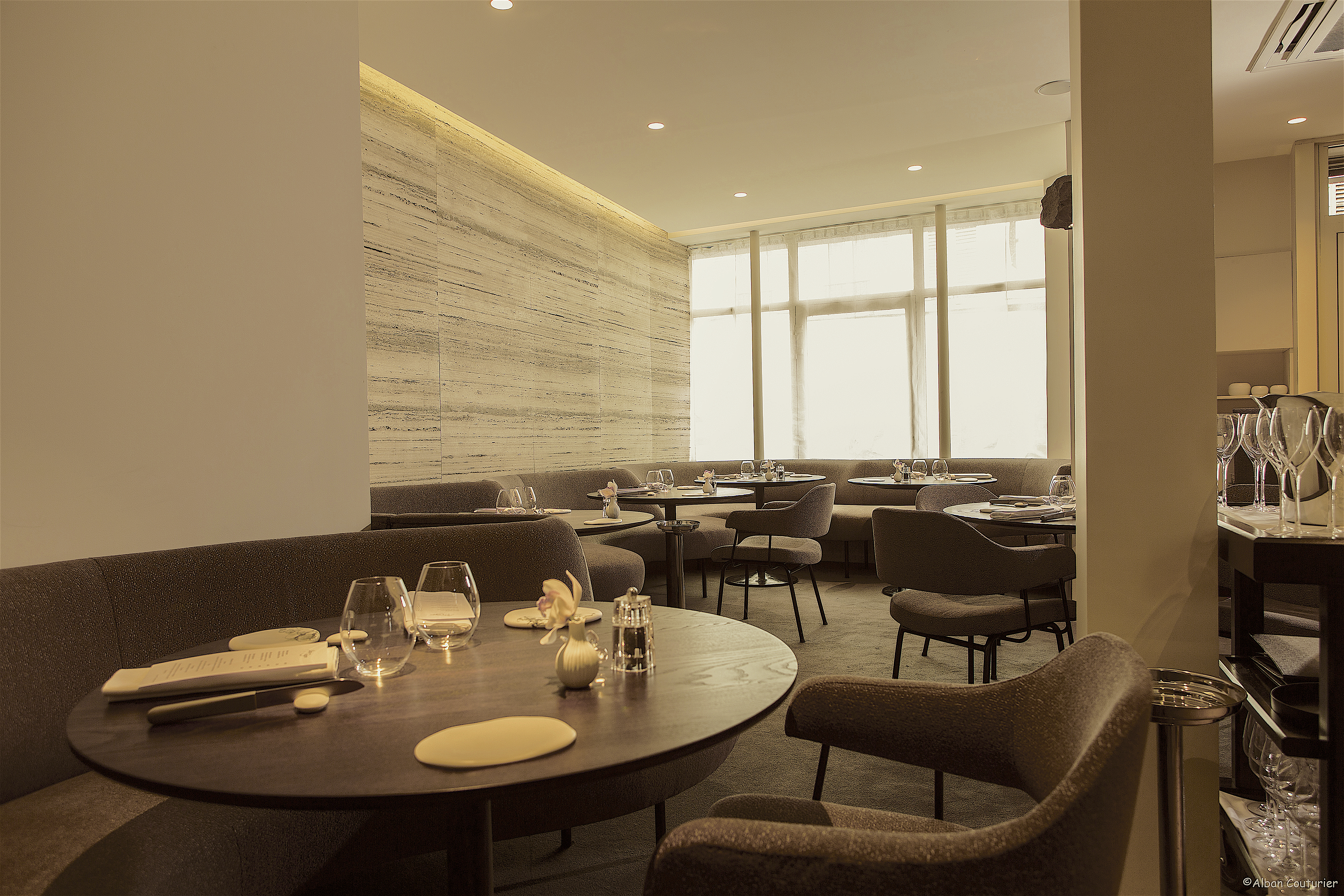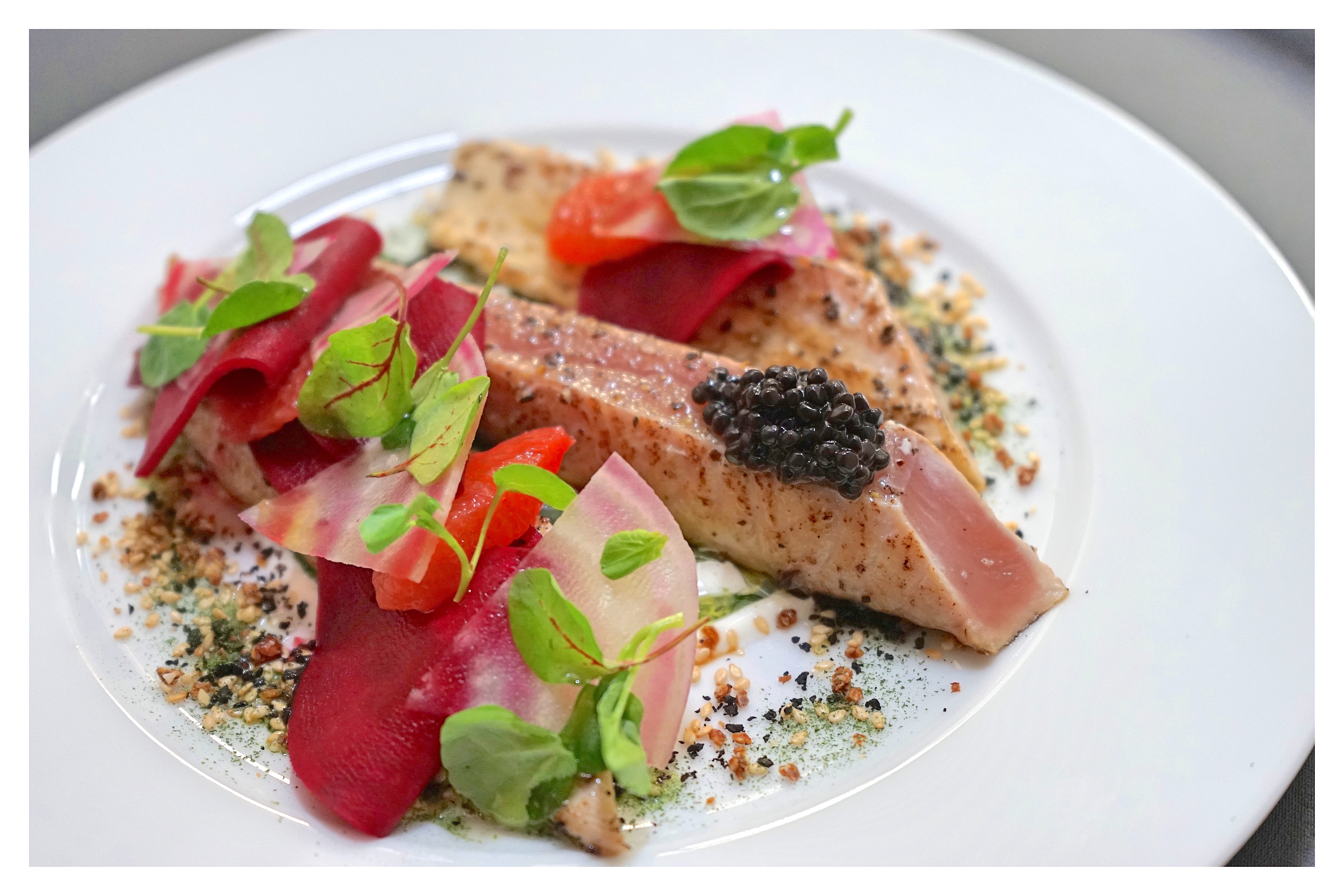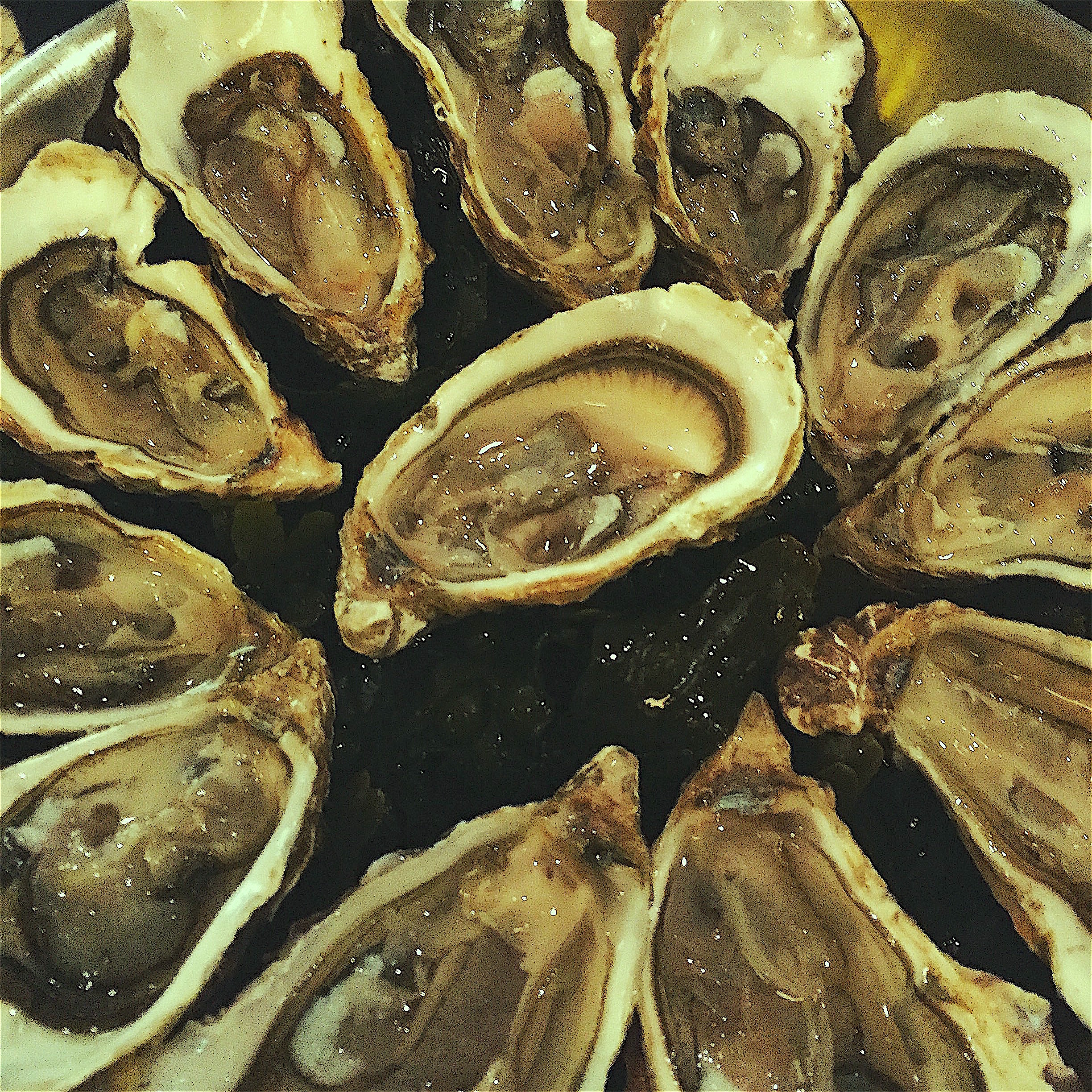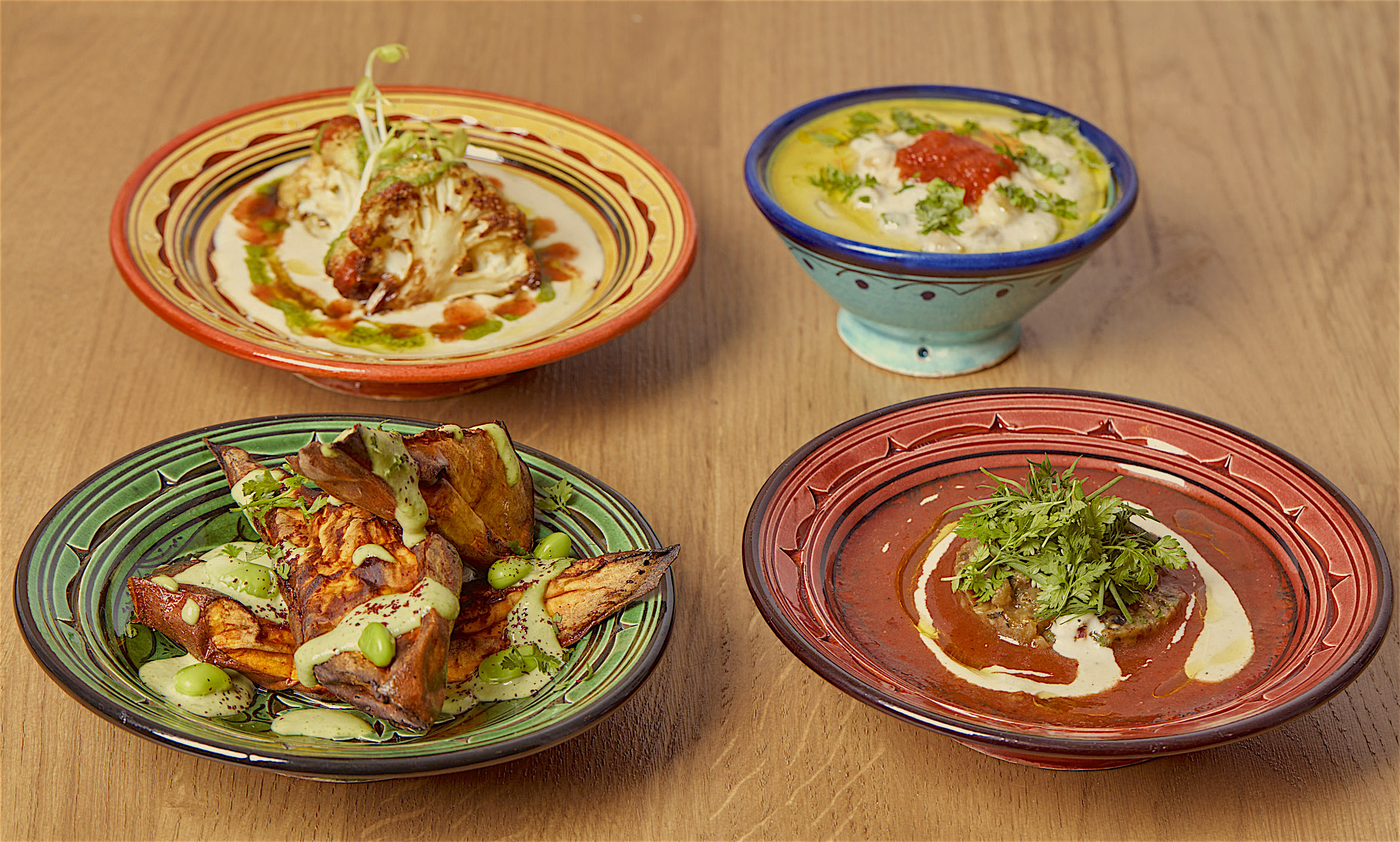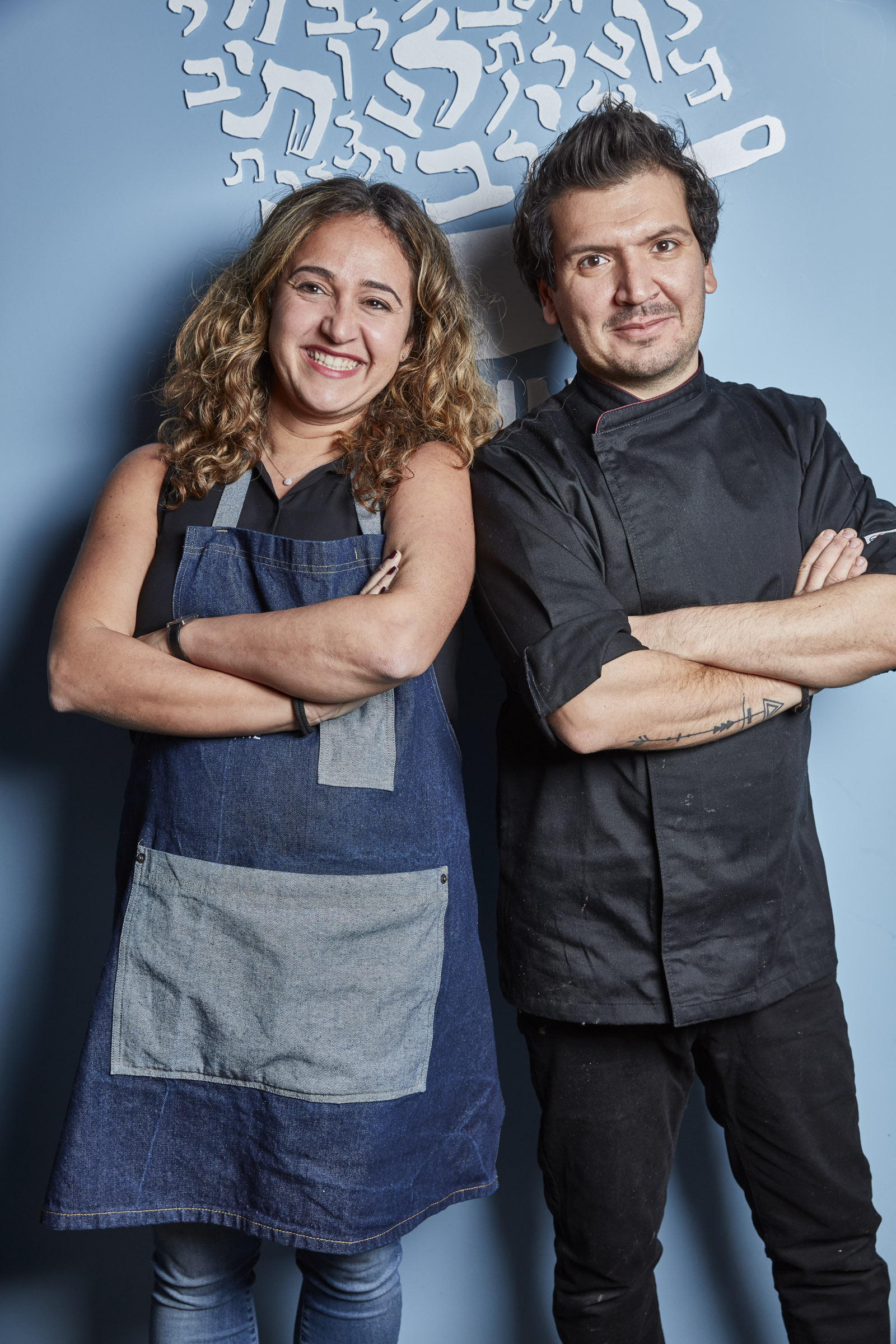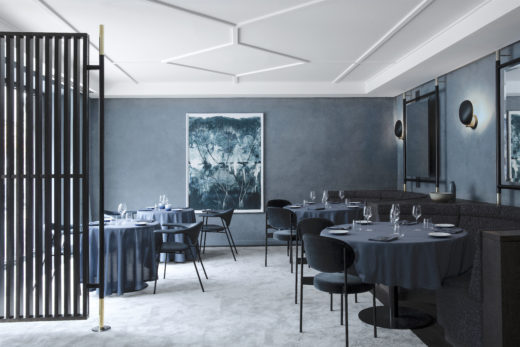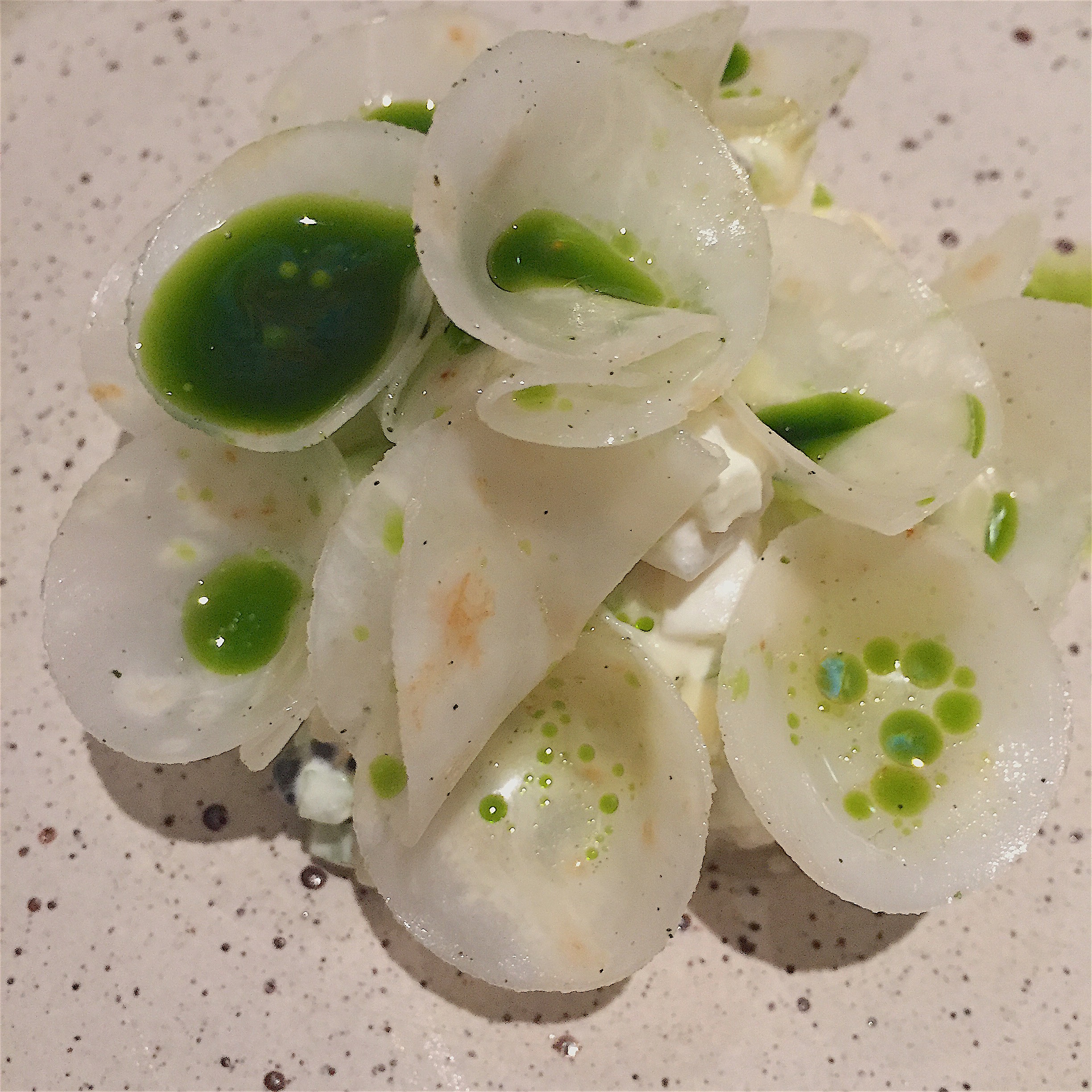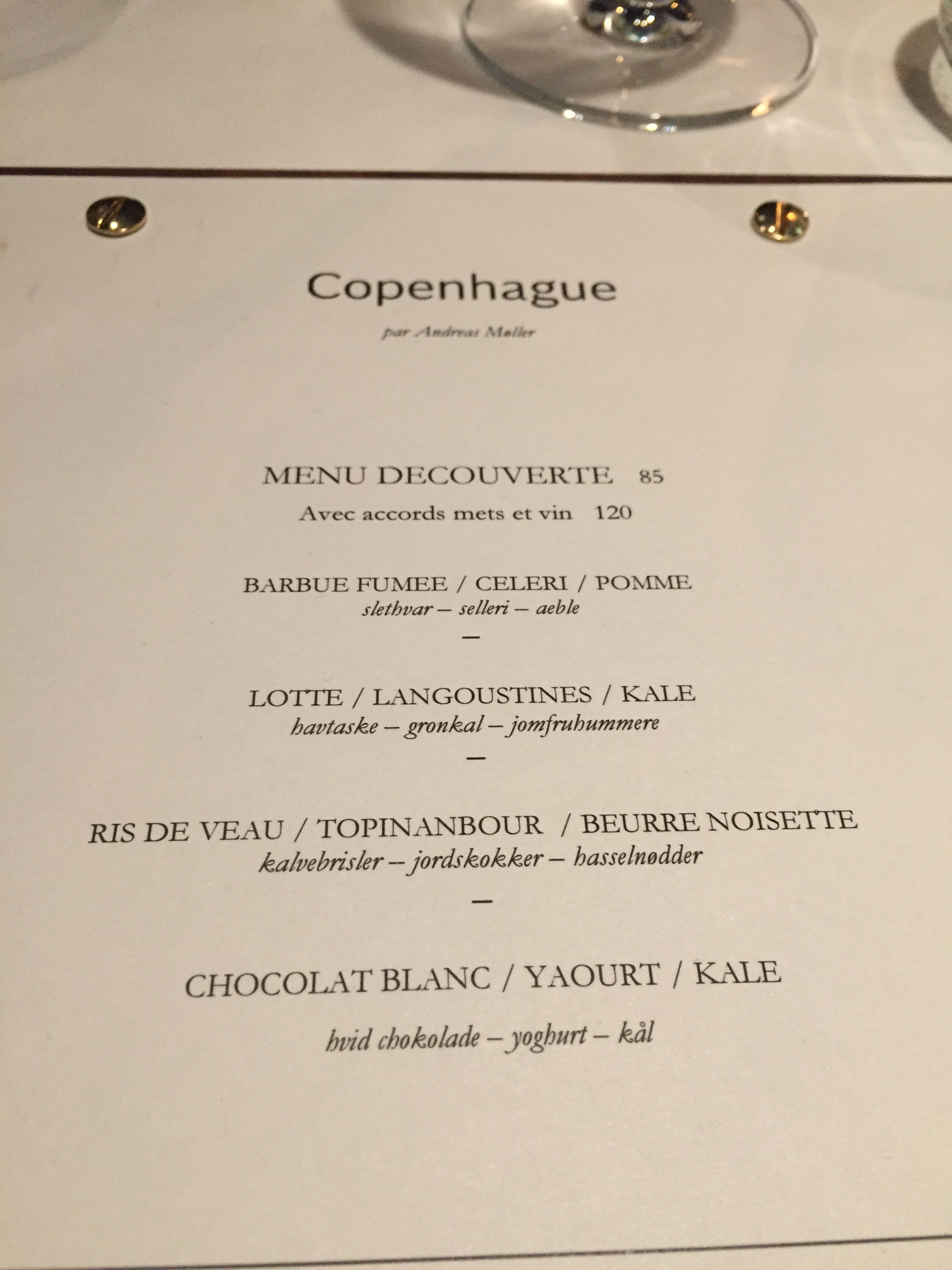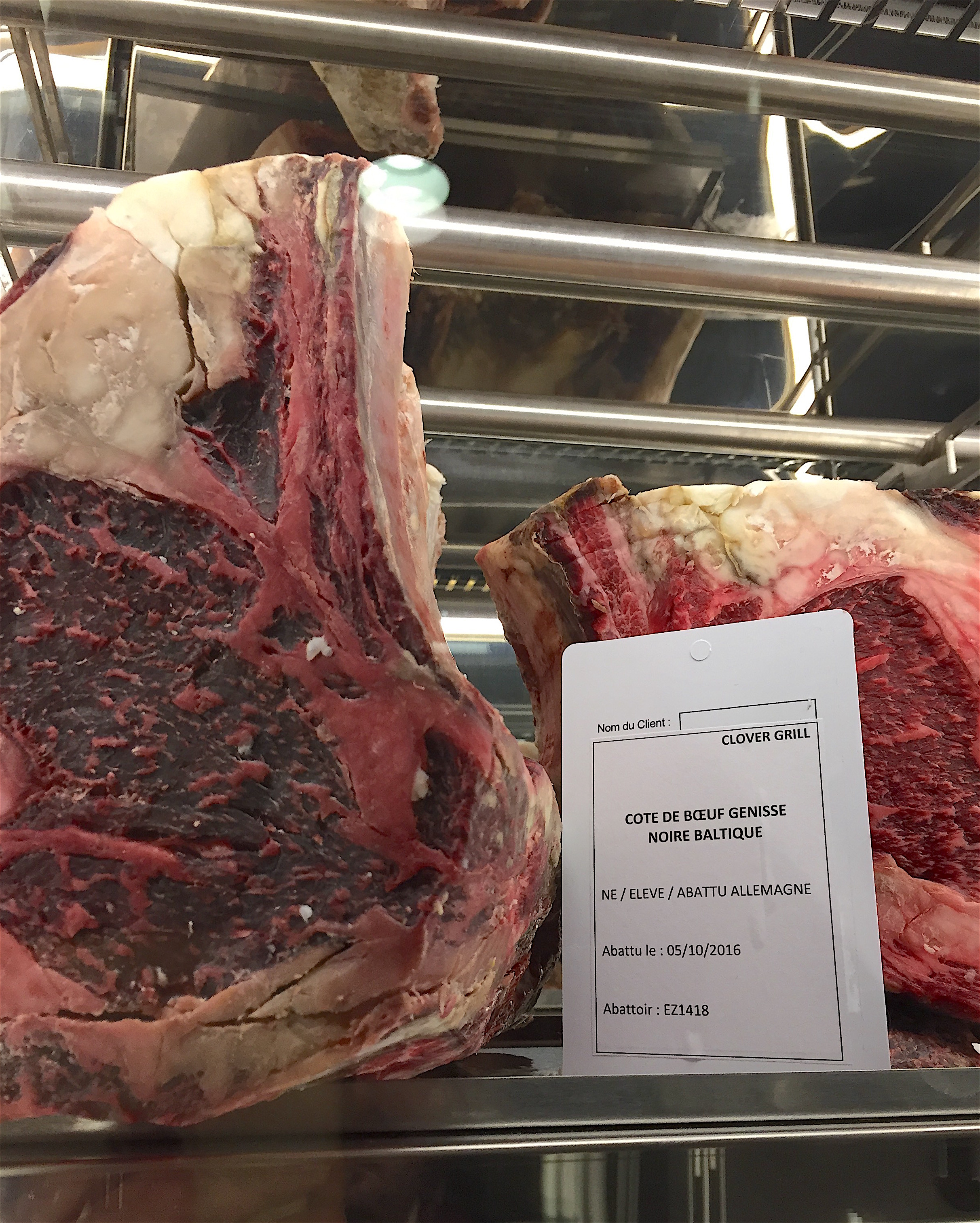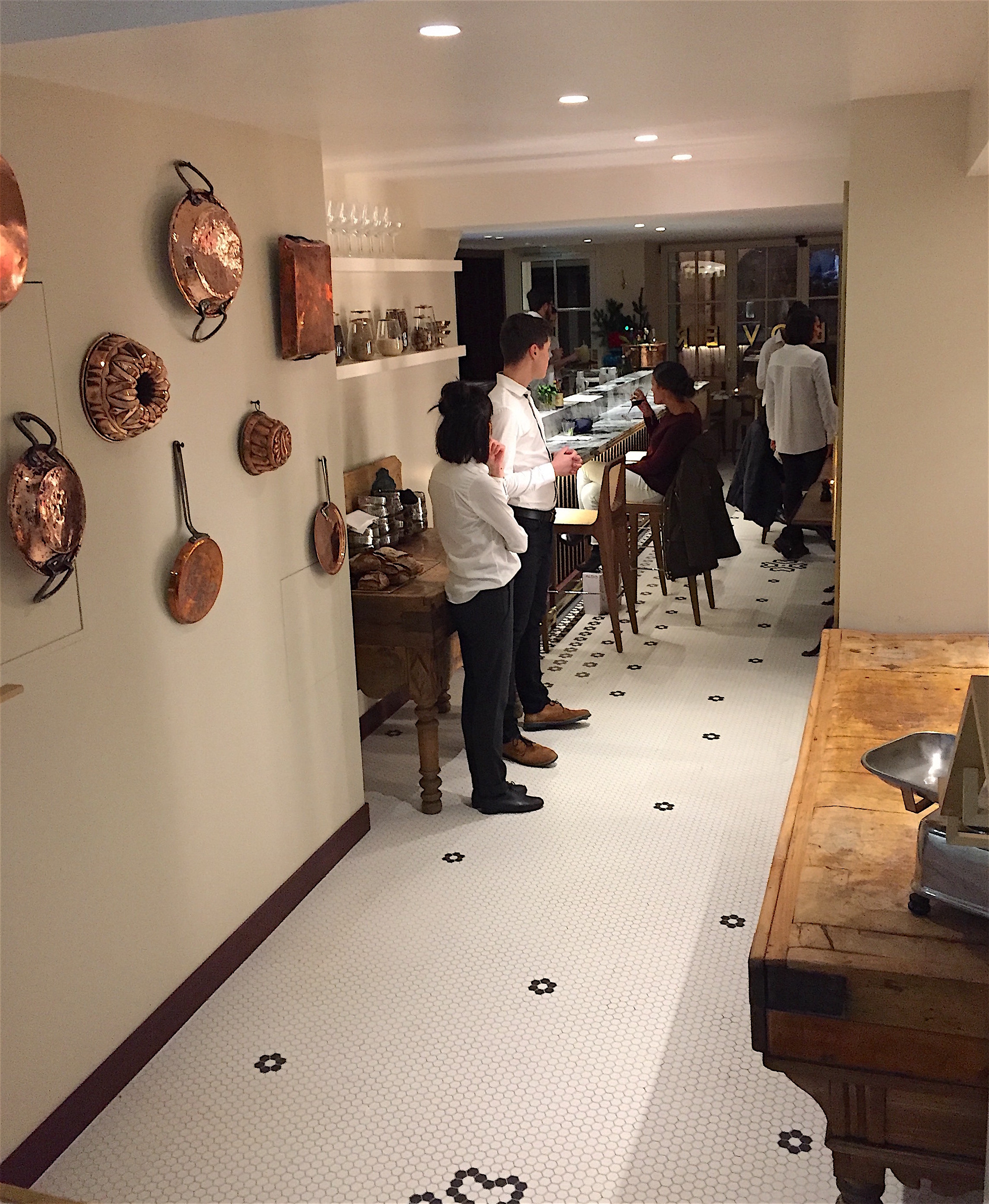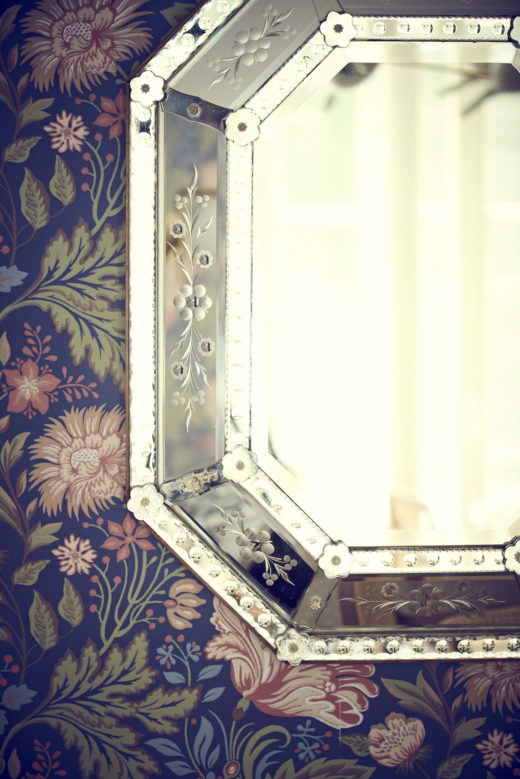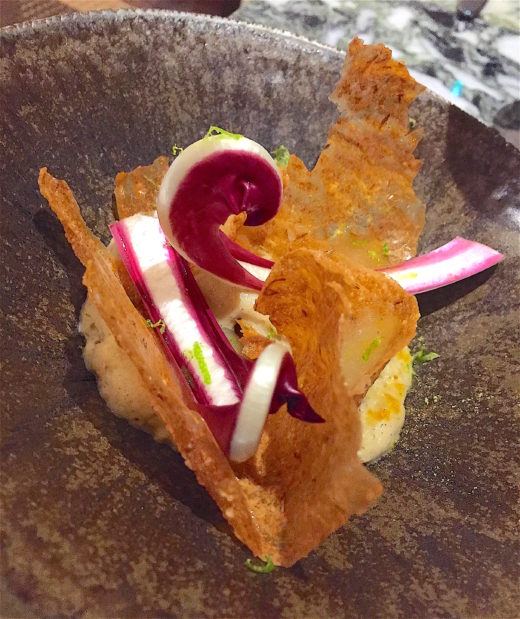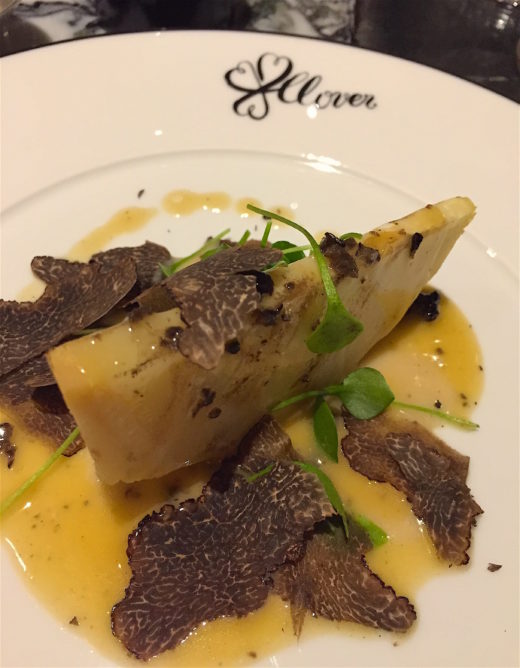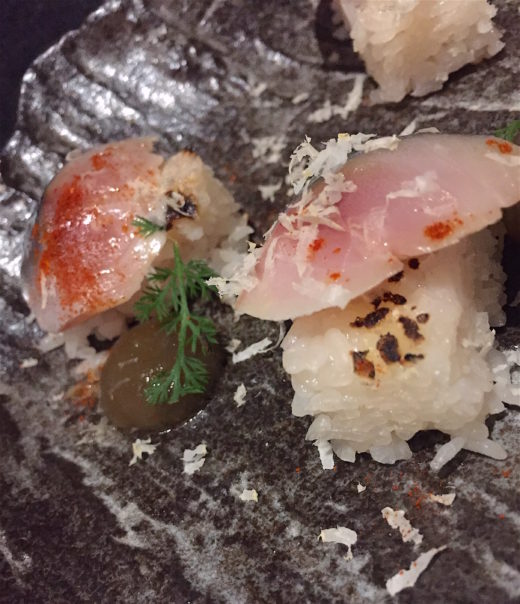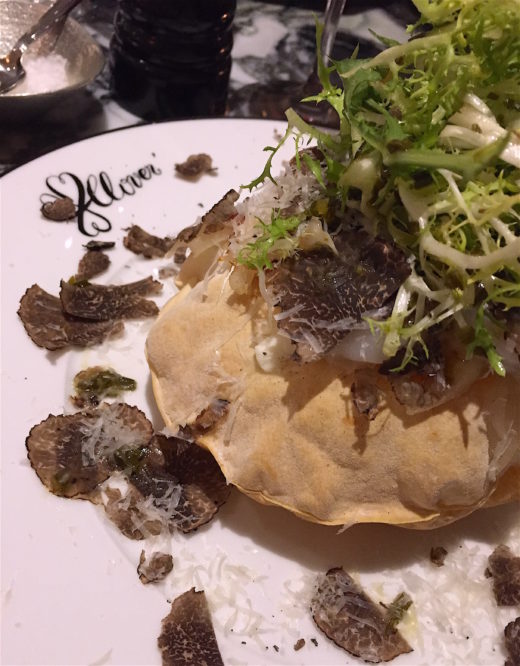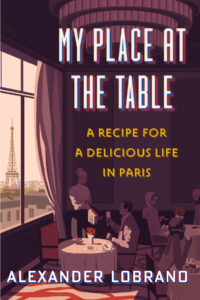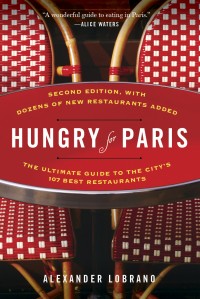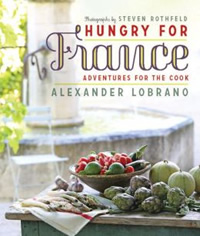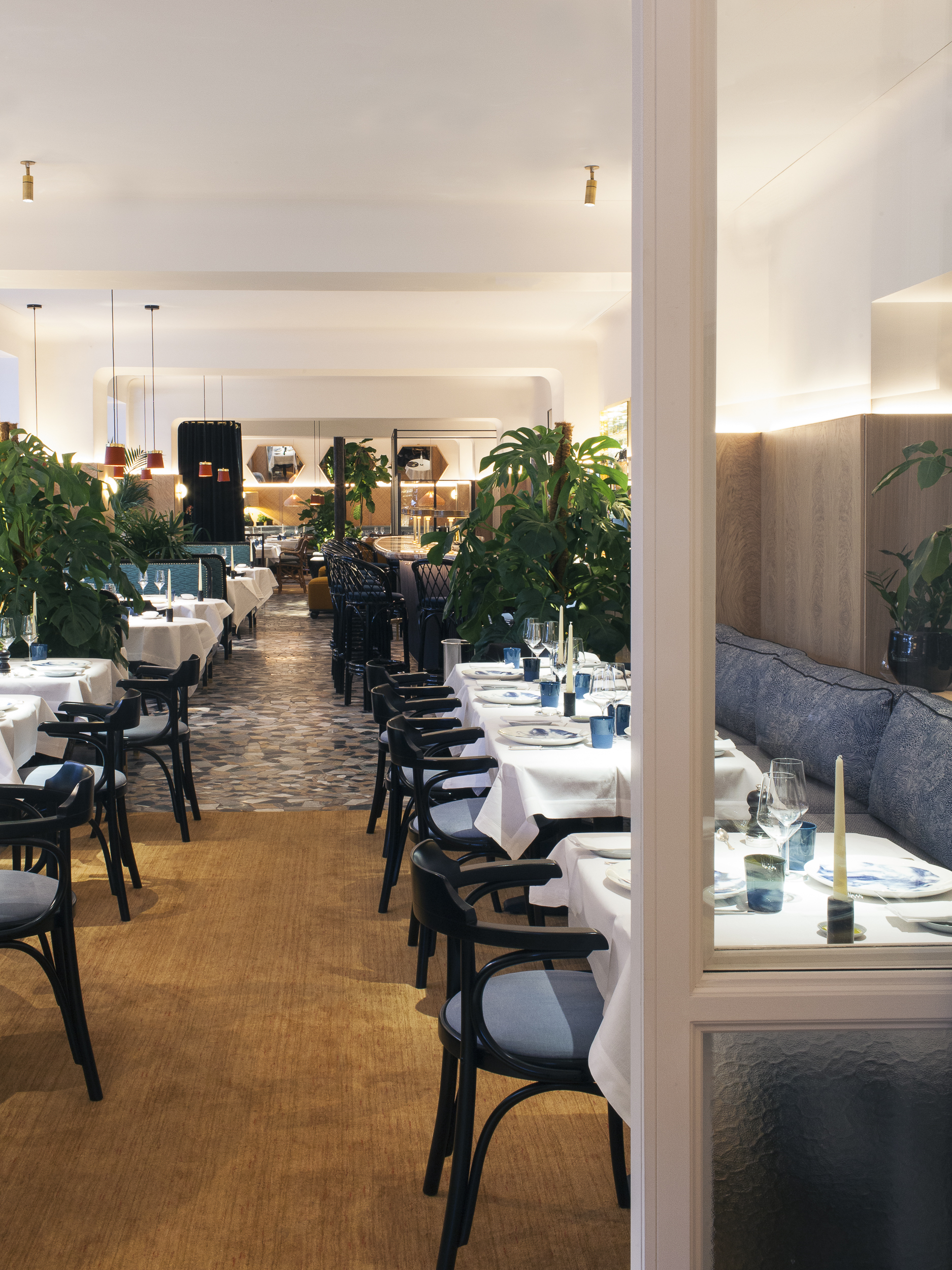
@Romain Laprade
The Divellec is one of the most beautiful new restaurants to open in Paris for a very longtime. As wonderfully louche as Studio K.O.’s Miami-meets-1940s Casablanca-in-Paris decor may be, however, what always matters most to me at a restaurant is the food, which is superb. Still, even though the seafood cooking at this venerable old-school fish house overlooking the Esplanade des Invalides on the Left Bank has been brilliantly rebooted by young chef Matthieu Pacaud, the son of Bernard Pacaud of the three star L’Ambroise on the Place des Vosges, this reopening has gone oddly under-remarked in a city as food-loving and mad for fish as Paris.
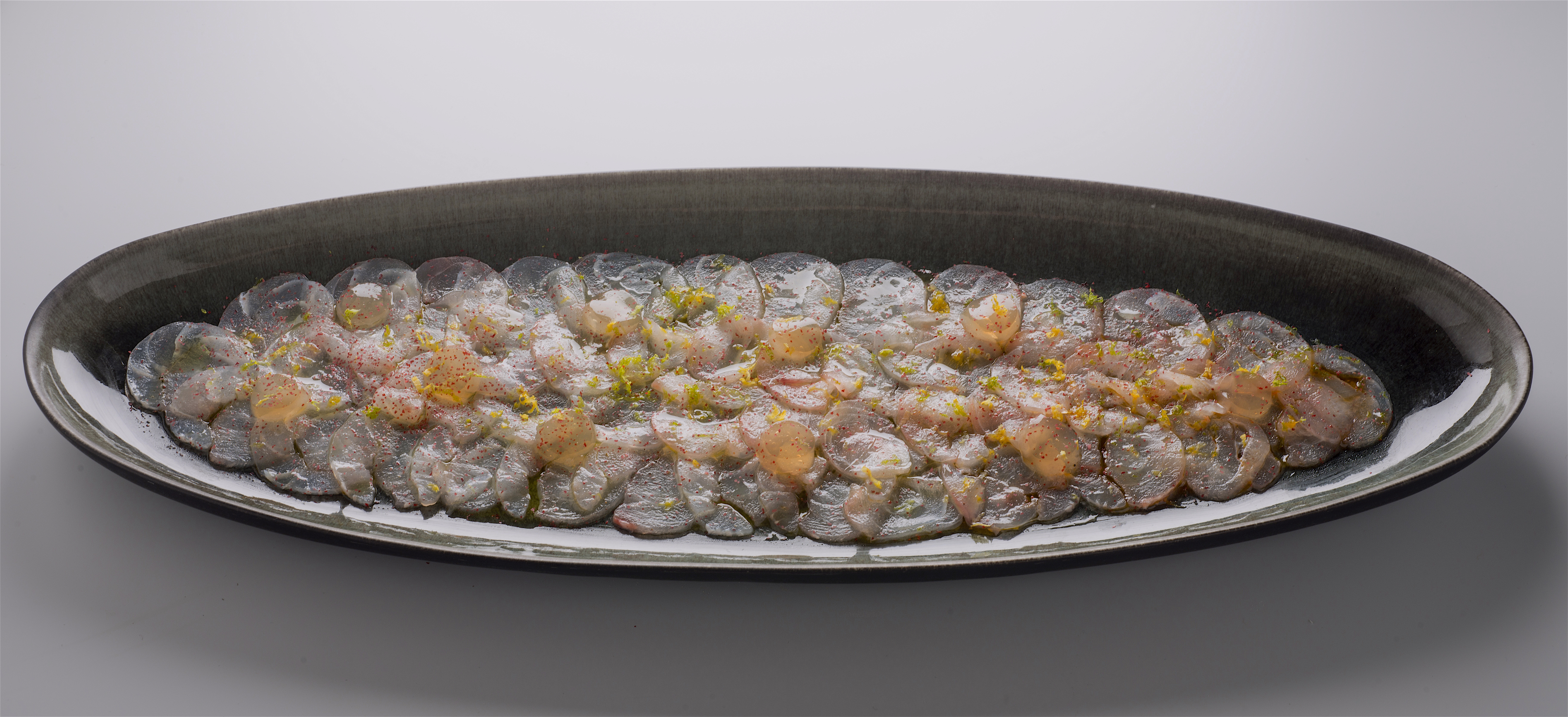
Sea bass carpaccio with citrus zest@Jacques Gavard
There are several reasons for this. First, the public relations firm charged with the relaunch emphasized the revived restaurant’s decor over its kitchen. This is doubtless because the chic Paris based Studio K.O. firm, which did the interiors of madly popular Chiltern Firehouse hotel and restaurant in London, also signed the new look for Divellec, too. But unless you’re enough of an interior-design nut to know who Studio K.O. is, it’s hard to see why any restaurant would emphasise its decor–gorgeous though it may be, over its food.
Then the restaurant had also been closed for three years after founder Jacques Le Divellec retired in 2013, so it fell off of a lot of people’s radars, and then those who remembered it, probably had an idea of a place that was slightly stuffy, somnolent and very expensive. Finally, Divellec is located in a very quiet, wealthy, well-guarded, older part of Paris, so it was unlikely to immediately gain much traction with the city’s best young food writers, those types who’d rather go belly to the bar at Clamato.

@Yann Deret
So with all of this in mind on a cold misty Sunday night as Bruno and I walked to dinner here for the first time since the reboot in a companionable silence, my expectations were vague. The truth, you see, is that I’d never actually had a meal at the former Le Divellec, a fusty bastion of politicians and captains of industry at noon, and the same in the evening with their mistresses, that I’d actually enjoyed. To be sure, I had once eaten a sublime grilled lobster a l’Amoricaine here with a stunning bottle of Mersault as the guest of an Irish banker whose freckled cherubic face existed as the perfect foil to his psycho-sexual perversion. But my last meal here, oh at least a good ten years before the lights went out in 2013, was my most memorable, since I had been invited to lunch by one of the most powerful and un-repentently honest food critics in France.
What I remember was the soft stale fishy smell of the dining room, the witheringly haughty service, and an awful lot of bland white sauce lashed all over everything. “How would you describe this meal, Alec?” the esteemed critic asked me. “Hotel du Lac,” I replied. He looked blank. “That’s the title of the British novelist Anita Brookner’s novel about a lonely middle-aged single woman who goes on holiday to a sad, sedate, anonymous, expensive hotel on a Swiss lake. She takes all of her meals in the hotel, and even though few of them are described, I imagine that they’d have been like this, soulless under-seasoned over-cooked luxury cooking,” I explained.
No one recognised the critic until after our very disappointing main courses were being cleared away. Then a silent thunder bolt shoot through the room, and a frantic Commedia dell’Arte like performance began when we were served an insanely generous portion of Beluga caviar with shocking speed.
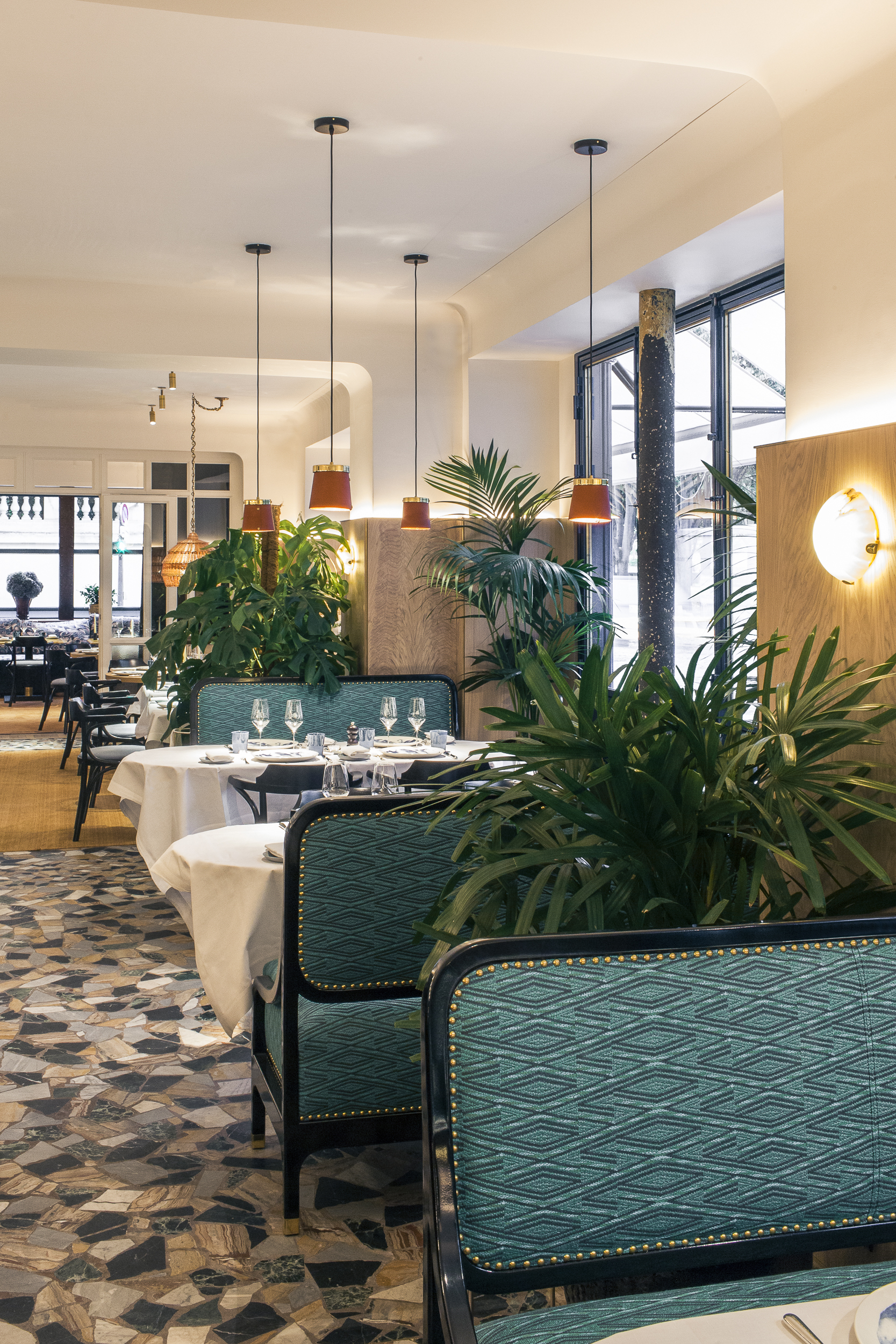
@Romain Laprade
“Oh Mon Dieu,” the critic sighed when the glistening black fish eggs were brought to the table with blinis. “Please….,” he said, waving his hands. “We’ve finished our meal already.” The face of the older waiter who’d just served us was a rigid mask of fear. “I think this might be the best dessert ever invented,” he said, a great line delivered with a poignantly plaintive smile–he was, after all, the solider on the front lines. The half beat of silence encouraged him. “It would be a shame to waste it now,” he said, his body locked in a half-bow. Silence. More silence. A short negative head shake. Several hundred Euros of caviar departed to an uncertain fate, and the scene stirred a ripple in the dining room, a place I always thought of as a theater of unwanted kisses, since the people who paid the bills here were usually avaricious, physically or psychologically, with their guests. You know, the lupine old man with his mistress, the curmudgeonly grandmother making menacing remarks to her grandchildren about the uncertainty of their inheritances, the broken middle-aged couples on the edge of a divorce caused by an infidelity they didn’t have the spleen left to discuss.
This is how restaurants get a reputation in our collective consciousness, with some being tagged as warm and happy, others cold and melancholy. So even if Le Divellec of yore was a storied table that once had a Michelin star, maybe two, and served reliably fresh classically prepared seafood, I think I’d be hard put to find very many Parisians who remember actually having had a good time here. So as we reached the front door, I found myself hoping this curse might have been lifted.
Fair’s fair. Sunday night is not an optimum time to judge any restaurant more ambitious than a brasserie, so as we were seated in a pretty grass-cloth upholstered room with low lighting and lots of plants, I thought, well, what I’m hoping for is just a good meal, not a revelation.
Continue reading…

